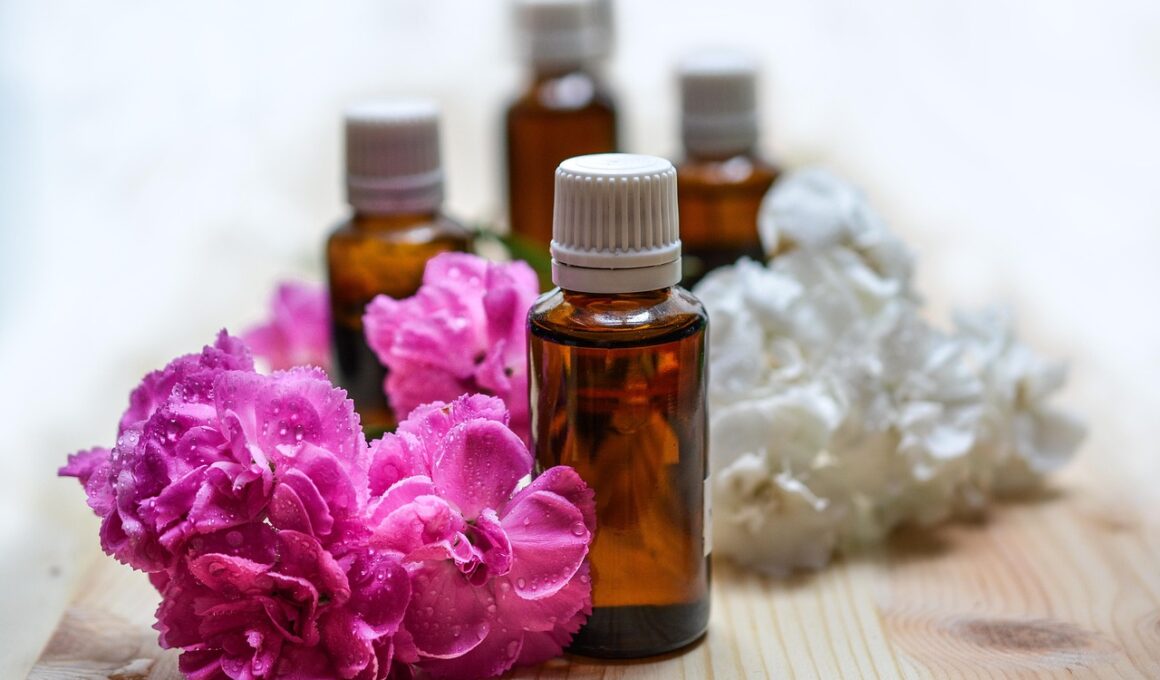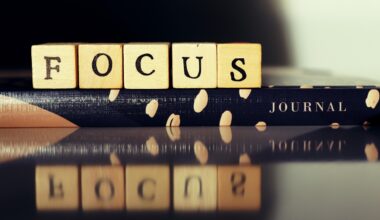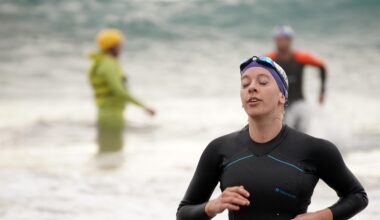The Role of Aromatherapy in Enhancing Guided Relaxation Sessions
Aromatherapy is an ancient practice that utilizes fragrant essential oils to promote relaxation and well-being. These oils are derived from various parts of plants, including leaves, flowers, and roots. Research demonstrates that integrating aromatherapy into guided relaxation techniques enhances the overall effectiveness of stress relief. Aromatherapy works by stimulating the olfactory senses, triggering responses in the brain that correlate with relaxation and calm. The aroma goes beyond physical sensations, positively impacting mental states, thus deepening the relaxation experience. When paired with guided relaxation, aromatic oils can amplify the session’s benefits significantly. Some essential oils known for easing stress include lavender, bergamot, and chamomile. Incorporating these into a guided practice sets the stage for a harmonious atmosphere. The soothing scents can help to clear the mind and create an environment conducive to relaxation. Guided visuals, paired with aromatic experiences, encourage a more profound state of peace. Additionally, aromatherapy provides clients with tools they can utilize outside of sessions, empowering them to manage anxiety more effectively in daily life. Aromatherapy offers a gateway into enhanced relaxation, benefiting both practitioners and clients alike.
Utilizing aromatherapy in guided relaxation sessions can significantly improve the overall experience and efficacy of the practice. The right essential oils can create a serene environment that encourages individuals to enter a deeper state of relaxation. Essential oils such as lavender and frankincense are particularly renowned for their calming properties. Incorporating these oils into the guided relaxation process can lead to enhanced focus and tranquility. The scents can awaken positive memories or feelings, making it easier for the participant to detach from daily stressors. Setting the stage before the session begins is vital; incorporating calming aromas can prepare the mind and body for effective relaxation. Moreover, using a diffuser in the session space can distribute the essential oils evenly throughout the area. This means participants will be enveloped in a soothing aroma from the moment they enter the space. Additionally, the process of inhaling these oils directly contributes to physiological changes, promoting reduced heart rates and lower blood pressure. Emphasizing the sensory experience by including aromas allows for a holistic approach, fostering well-being and leaving lasting impacts beyond each session.
Choosing the Right Essential Oils
When selecting essential oils for guided relaxation, it’s essential to understand their unique properties. Each oil offers various benefits, making some more suitable depending on individual preferences or needs. Lavender is one of the most popular choices, renowned for its ability to promote relaxation and alleviate anxiety. It works effectively in calming the mind and preparing individuals for meditation or deep relaxation. Other notable oils include bergamot, which uplifts mood, and geranium, which balances emotions. A blend of different oils can also be effective, offering a wider range of benefits. Users might create a sleep blend with lavender and chamomile, promoting restful sleep after a guided session. Incorporating oils like peppermint and eucalyptus can invigorate or stimulate, serving as an alternative for morning practice. The key is to match the aroma with the intended outcome of the relaxation session, ensuring a tailored experience that resonates with individual needs. This personalized approach sets aromatherapy apart, allowing practitioners to ease tension effectively.
Another essential aspect of utilizing aromatherapy in guided relaxation is the method of application. There are numerous ways to incorporate essential oils, ranging from diffusion to topical application. The most common approach is using a diffuser to disperse oils into the air. This option allows for a steady aroma throughout the session, enhancing the atmosphere without being overpowering. Another technique is applying diluted oils to pulse points to experience the scent directly when practicing relaxation techniques. Nonetheless, it’s crucial to ensure essential oils are adequately diluted with a carrier oil to avoid skin irritation. For those in a group setting, providing each participant with their personal inhaler or a scented cloth can also deepen their experience. Education on safe practices is vital to maximizing the benefits while minimizing potential side effects. Offering participants a choice of oils can also personalize their experience, encouraging them to choose scents that resonate deeply with them. Ultimately, the method of application should align with comfort, preference, and safety, creating an inviting environment conducive to relaxation.
Creating a Calming Space
Transforming the space where guided relaxation occurs can significantly affect the ambiance and overall experience. Aromatherapy alone may not suffice; creating a calming environment requires careful consideration of various elements. Lighting, decor, and sound can all play vital roles in enhancing relaxation. Soft, dim lighting contributes to a serene mood, while calming music, preferably without lyrics, can support relaxation. Natural elements like plants can also foster a sense of connection with nature. When incorporating aromatherapy, placing scented candles or essential oil diffusers can boost the space’s ambiance. It’s essential to maintain a clutter-free environment that promotes a peaceful mindset. Ensuring adequate ventilation also helps distribute aromas effectively, enhancing the session’s overall experience. To complement the scents, incorporating elements like soft mats, cushions, and blankets allows participants to feel physically comfortable, further relaxing the body and mind. A calming and inviting space encourages participants to unwind and become more receptive, harnessing the benefits that guided relaxation can offer. Therefore, dedicating time to create this sacred space enhances the ability to engage deeply with the aroma’s calming effects.
The benefits of aromatherapy extend beyond the immediate feelings of relaxation; they can promote long-term emotional and psychological well-being too. Participants often report feeling more balanced and centered in their lives after experiencing guided sessions enriched with aromatherapy. This occurs partly due to neurological responses triggered by various scents, leading to elevated moods and elevated levels of calm. Additionally, incorporating aromatherapy can serve as a coping mechanism for dealing with stress or anxiety. Participants can learn to associate specific aromatic experiences with feelings of tranquility, making it a valuable tool for self-care. For example, an individual may find that the scent of citrus invigorates them, making it suitable for morning routines or energizing moments. Conversely, they may reach for more calming scents like lavender before bedtime. This self-awareness fosters independence in managing stress. A regular practice of guided relaxation with aromatherapy can also reinforce positive habits, encouraging individuals to prioritize their well-being. This approach creates long-lasting effects, rooted in both immediate relief and gradual emotional resilience through mindful practices.
Conclusion
In conclusion, integrating aromatherapy into guided relaxation sessions provides numerous benefits that enhance the overall experience. Not only does it promote relaxation during the practice, but it also empowers individuals with tools for managing anxiety externally. By selecting appropriate essential oils and creating a calming environment, the potential for transformation becomes apparent. Participants can explore different aromatic profiles and are encouraged to tailor the experience to their preferences and needs. Thanks to its wide-ranging impact on both the mind and body, aromatherapy holds an essential place in holistic practices, establishing a lasting bond between relaxation and the scent. As individuals become more aware of their emotional triggers and preferences, they can build a personal toolkit of scents that they can return to time and again, reinforcing their capacity to navigate stress. Guided relaxation can continue to flourish with this ancient practice, paving the way for greater well-being and emotional health. Familiarity with aromatherapy opens doors for deeper exploration within holistic health practices, emphasizing the mind-body connection while fostering mental clarity and peace. The future of guided relaxation looks promising thanks to the role of aromatic essences.
Finally, the intertwining of aromatherapy and guided relaxation sessions exemplifies a holistic approach to well-being. This fusion not only enriches the experience but also supports emotional growth and resilience. Participants leave these sessions with enhanced tools for navigating life’s challenges, armed with the knowledge of incorporating aromatic practices into daily routines. The versatility of essential oils ensures there are endless possibilities for exploration, enabling practitioners to adapt their approaches as needed. With a focus on self-care and mindfulness, the combination of guided relaxation and aromatherapy takes personal development to a new level. Fostering a sense of community around these practices encourages shared experiences and collective healing, making it a supportive journey for all involved. As awareness of the mind-body connection gains momentum, embracing natural remedies like aromatherapy becomes increasingly essential in promoting overall well-being. In a fast-paced world, finding grounding techniques allows individuals to cultivate a deeper sense of peace. By integrating these approaches into daily life, one can create a harmonious existence that blends relaxation, mindfulness, and personal growth. The synergy of aromatherapy with guided relaxation shows the power of holistic practices in facilitating vibrant health and vitality.


